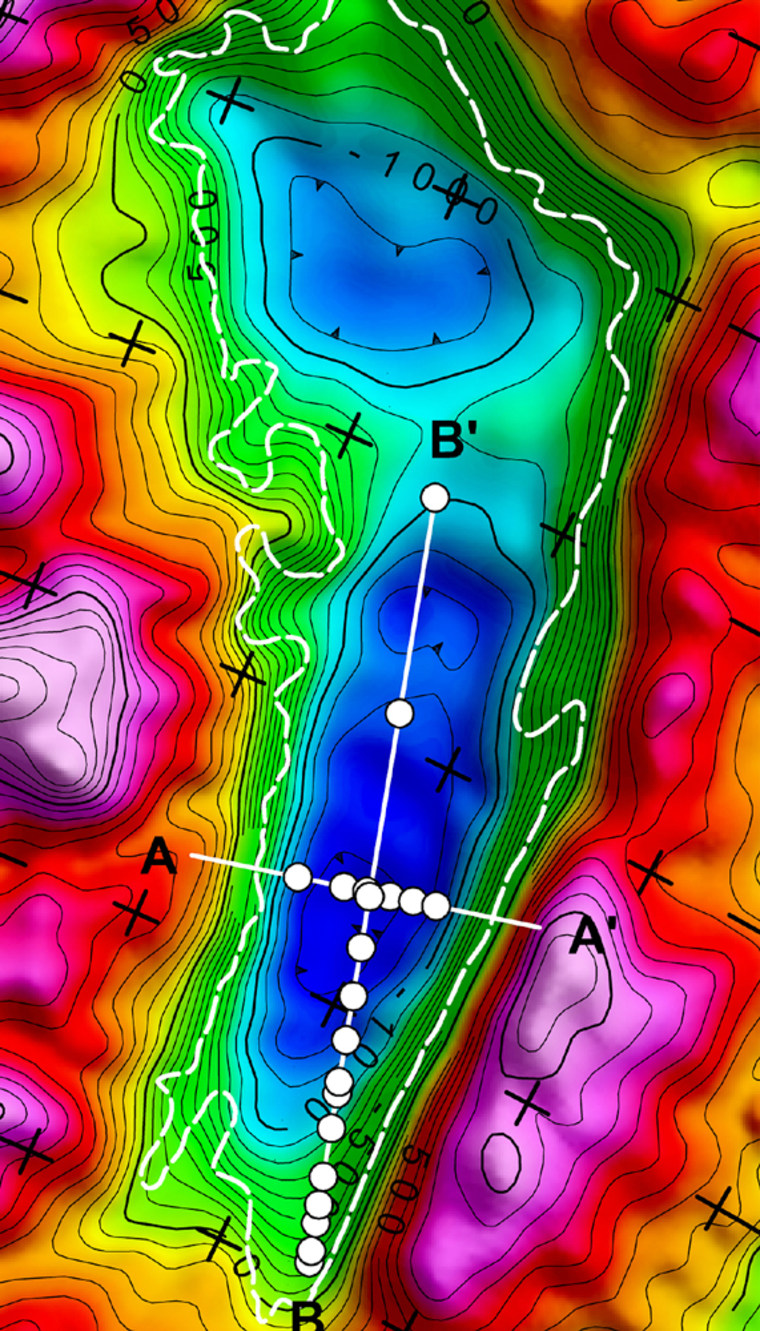Lake Vostok, deep beneath the Antarctic ice, appears to be divided into two deep basins, according to researchers who profiled the lake with an array of complex instruments.
Hidden beneath some two miles of ice, Lake Vostok is a liquid body of water roughly the size of Lake Ontario. It is thought to have existed undisturbed for thousands of years and researchers hope to sample the lake for signs of microbes.
A longtime Russian research station at the lake site has produced measurements of the lake bottom at various points. But the new analysis is the first overall water depth map of the lake.
Researchers from the Lamont-Doherty Earth Observatory of Columbia University and the University of Tokyo reported their findings in a recent issue of Geophysical Research Letters.
Michael Studinger of Lamont-Doherty said that the existence of two distinct regions with a ridge between them could have significant implications for what sorts of ecosystems scientists would find in the lake.
"The ridge between the two basins will limit water exchange between the two systems. Consequently, the chemical and biological composition of these two ecosystems is likely to be different," he said in a statement released Wednesday.
The team used a laser altimeter, ice-penetrating radar and gravity measurements collected by aircraft flying over the lake to produce their analysis.
They found two distinct sub-basins separated by a narrow ridge. The water over that ridge is about 650 feet deep, compared to roughly 1,300 feet deep in the northern basin and 2,600 feet deep in the southern.
The U.S. National Science Foundation supported the research.
